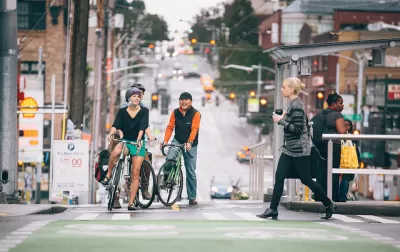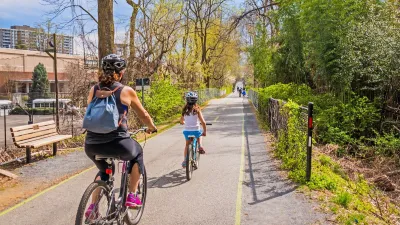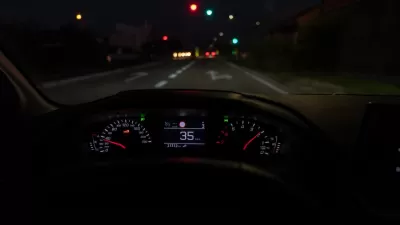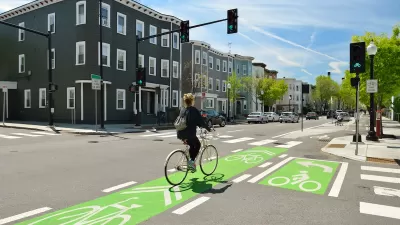Revenue from Washington's traffic enforcement cameras will go in part toward efforts to assist small communities in applying for grants and accessing funding opportunities.

Revenue from Seattle's traffic camera program earmarked for "bicycle, pedestrian, and nonmotorist safety improvements" will likely go toward capacity-building efforts geared at helping communities apply for grants and acquire funding for bike and pedestrian projects. As Ryan Packer reports, Washington's Traffic Safety Commission has proposed the plan as an alternative to using the funding to benefit a minimal number of individual projects.
According to a report from Washington DOT, "jurisdictions around the state are either unaware of the funding available from these programs, or lack knowledge of best practices around submitting an application." The plan aims to enable communities to submit strong applications and ensure they are aware of potential opportunities, which will serve to build institutional knowledge and financial resilience into the future.
WSDOT Director of Active Transportation Barb Chamberlain points out the highly competitive nature of the state's grants, calling for more funding from the state legislature for grant programs like Safe Routes to School. Since 2005, just 25 percent of applications for bike and pedestrian programs were funded. As the article states, "According to WSDOT, since 2005, only 45%, or 121, of the 281 incorporated cities and towns in Washington have received funding through the programs."
The source article details the governor's proposed budget increases and projected revenue from automated traffic enforcement, which Packer calls a "vital tool" for reimagining traffic enforcement and reducing police interactions.
FULL STORY: Seattle’s Traffic Camera Funds Earmarked for Statewide “Capacity Building” Efforts

Alabama: Trump Terminates Settlements for Black Communities Harmed By Raw Sewage
Trump deemed the landmark civil rights agreement “illegal DEI and environmental justice policy.”

Planetizen Federal Action Tracker
A weekly monitor of how Trump’s orders and actions are impacting planners and planning in America.

The 120 Year Old Tiny Home Villages That Sheltered San Francisco’s Earthquake Refugees
More than a century ago, San Francisco mobilized to house thousands of residents displaced by the 1906 earthquake. Could their strategy offer a model for the present?

Ken Jennings Launches Transit Web Series
The Jeopardy champ wants you to ride public transit.

BLM To Rescind Public Lands Rule
The change will downgrade conservation, once again putting federal land at risk for mining and other extractive uses.

Indy Neighborhood Group Builds Temporary Multi-Use Path
Community members, aided in part by funding from the city, repurposed a vehicle lane to create a protected bike and pedestrian path for the summer season.
Urban Design for Planners 1: Software Tools
This six-course series explores essential urban design concepts using open source software and equips planners with the tools they need to participate fully in the urban design process.
Planning for Universal Design
Learn the tools for implementing Universal Design in planning regulations.
Clanton & Associates, Inc.
Jessamine County Fiscal Court
Institute for Housing and Urban Development Studies (IHS)
City of Grandview
Harvard GSD Executive Education
Toledo-Lucas County Plan Commissions
Salt Lake City
NYU Wagner Graduate School of Public Service





























